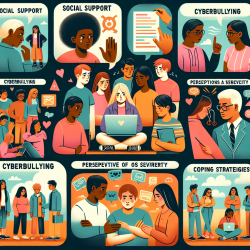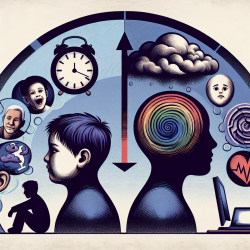Understanding Adolescent Coping Strategies for Victimization
In a world where bullying and victimization have transcended the physical realm to include digital platforms, understanding how adolescents cope with these challenges is crucial. The research article "Coping with Public and Private Face-to-Face and Cyber Victimization among Adolescents in Six Countries: Roles of Severity and Country" provides valuable insights into how adolescents from different cultural backgrounds perceive and handle victimization.
Key Findings and Implications
The study explored the roles of medium (face-to-face vs. cyber) and publicity (public vs. private) in adolescents' perceptions of severity and their coping strategies. It involved 3,432 adolescents aged 11-15 from China, Cyprus, the Czech Republic, India, Japan, and the United States. The findings underscore the importance of teaching effective coping strategies to adolescents and considering how perceptions of severity, publicity, and medium influence these strategies.
Cultural Influences on Coping Strategies
Cultural values significantly impact coping strategies. Collectivistic cultures, such as those in China and Japan, tend to favor strategies that consider the broader social context, such as seeking social support. In contrast, individualistic cultures, like those in the U.S., may lean towards more self-focused strategies like retaliation.
Gender Differences in Coping
Gender also plays a role in coping strategies. The study found that girls are more likely to seek social support, while boys may resort to retaliation. These differences highlight the need for gender-sensitive approaches in developing intervention programs.
Practical Applications for Practitioners
For practitioners working with adolescents, understanding these dynamics is crucial. Here are some actionable steps:
- Promote Social Support: Encourage adolescents to seek help from friends, family, or professionals. This strategy is universally beneficial and can mitigate negative outcomes.
- Understand Cultural Contexts: Tailor interventions to fit the cultural backgrounds of adolescents. What works in one culture may not be effective in another.
- Address Gender Differences: Develop programs that consider gender-specific needs and tendencies in coping strategies.
- Educate on Severity Perceptions: Help adolescents understand the severity of victimization and its impact on their well-being, encouraging them to seek help when needed.
Encouraging Further Research
While this study provides a comprehensive overview, there is room for further research. Longitudinal studies could explore how coping strategies evolve over time and the long-term effects of different strategies on adolescent development.
To read the original research paper, please follow this link: Coping with Public and Private Face-to-Face and Cyber Victimization among Adolescents in Six Countries: Roles of Severity and Country.










